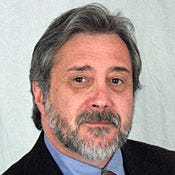New Wireless Sensors Tackle Old Problems Like Pneumonia
Wireless sensor technology developed by the University of Missouri can measure subtle changes in pulse, respiration, and bed restlessness, warning clinicians of the early onset of pneumonia or other life-threatening problems.


10 Wearable Devices To Keep Patients Healthy
10 Wearable Devices To Keep Patients Healthy (click image for larger view and for slideshow)
For the past seven years, wireless sensor technology developed at the University of Missouri (MU) has helped detect disease in its early stages among residents living at the TigerPlace assisted care facility in Columbia, Mo. Now, thanks to a grant from the National Science Foundation, that technology soon will be expanded to remotely monitor the elderly in another facility in Cedar Falls, Iowa.
Marilyn Rantz, RN, professor of nursing at the Sinclair School of Nursing at the University of Missouri, said that staffers and MU researchers will remotely monitor residents in Cedar Falls from the TigerPlace facility, which is about three miles from MU. High-speed video conferencing capabilities will allow communication between staff and residents at the two locations.
"Using what we're already doing at TigerPlace and deploying it at the facility in Cedar Falls will allow us to further test the concept of remote health care," Rantz told InformationWeek Healthcare. "Monitoring individuals with in-home sensors allows us to unobtrusively monitor their health changes based on their individual activity patterns and baseline health conditions."
[ There's almost no end to the amount of useful medical information available online. Read 7 Health Education Tools For Patients. ]
Rantz said that environmentally embedded sensors that monitor pulse, respiration, and bed restlessness have been a key to the success of early detection.
"What we have been able to discover are new pieces of information from the environmentally embedded sensors that can indicate when people are having functional decline and particularly when they are getting sick," Rantz said. She added that the sensors are able to pick up when people are developing an illness between 10 and 26 days before the older adult or someone else detects the illness.
"We've automated this process, we send out alerts to the staff and take a closer examination and look at the changes in the sensor patterns. We look at those changes and do an assessment to see what's going on."
For example, pneumonia caught in its early stages can deter an emergency room visit or hospitalization. "You have less health care costs and it's easier on the person because you can recover from that acute illness faster because you caught it early," said Rantz.
Alerts are set up on an email system and are accessible via a smartphone, said Rantz. The alerts are currently sent to the healthcare staff at TigerPlace and the healthcare research team at MU. The alerts from the sensors at the Iowa facility go to the Iowa staff, the TigerPlace staff, and the research team, she said.
An environmentally embedded sensor is a motion sensor that is unobtrusive and environmentally pleasing. For example, a sensor that that can be mounted on a wall or one that sits in a box that looks like an end table.
These sensors wirelessly transmit data to small computers that in turn transmit data via a secure network server located at TigerPlace and in the telecom building at MU. "We do real-time data analysis and feedback to the user and the healthcare provider," Rantz said.
Rantz said that the combination of sensor technology with care coordination represents the future. "Much of what I see with older adults are the same problems that I saw 40 years ago and this is a new solution to those same old problems."
According to a 2010 position paper released by the Center for Technology and Aging entitled "Technologies for Remote Patient Monitoring (RPM) for Older Adults," the U.S. healthcare system could reduce its costs by nearly $200 billion during the next 25 years if remote monitoring tools were used routinely in cases of congestive heart failure, diabetes, and chronic obstructive pulmonary disease (COPD). The position paper stated that RPM technologies could help older adults slow the progression of chronic disease and alert caregivers and prompt intervention when a vulnerable older adult is injured or in harm's way.
Get the new, all-digital Healthcare CIO 25 issue of InformationWeek Healthcare. It's our second annual honor roll of the health IT leaders driving healthcare's transformation. (Free registration required.)
About the Author
You May Also Like






